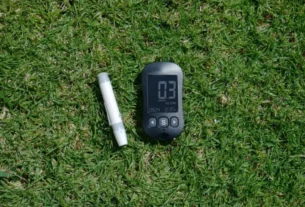Most kids eventually contract chickenpox, a common and mild childhood disease. It results in an outbreak of red, itchy areas that develop into blisters filled with fluid. They later produce scabs, which finally fall off, and crust over. Some kids have just a few spots, whilst others may have them all over their bodies. The face, ears, scalp, underarms, chest, abdomen, and legs and arms are the areas where they seem to show up most frequently.
The varicella-zoster virus is what causes varicella, the medical term for chickenpox. It can spread readily and swiftly from an infected person. Chickenpox is so common and frequent in children, 90% of people have actually experienced it and are therefore immune to it. Typically, children have chickenpox in the winter and spring, especially between March and May.
Signs & Symptoms of Chickenpox
In addition to a fever, headaches, sore throat, or stomachache, chickenpox frequently begins without the characteristic rash. The fever may range from 101°-102°F (38.3°-38.8°C) for a few days, and these symptoms may also linger for a few days. Usually, the back, face, or tummy is where the red, itching skin rash first appears. After that, it spreads to practically every other body part, including the genitalia, scalp, mouth, arms, and legs.
Small red spots that resemble pimples or bug bites are the first signs of the rash. They start out as thin-walled blisters with fluid within that appear in waves over the course of 2 to 4 days. Eventually, the exposed sores left by the ruptured blister walls crust over to form dry, dark scabs. Red bumps boil, and scabs—the three phases of the chickenpox rash—appear on the body simultaneously. Children with a weakened immune system or skin conditions like eczema may experience a larger spread or a more severe case of the rash.
Why Take a Test?
to determine whether a case of chickenpox or shingles is present, recent, or previous as necessary; Before using immunosuppressive medicine, you should check to see if you have developed immunity to the varicella-zoster virus (VZV) or if there is a chance of infection reactivation.
Labs and Tests
The majority of the time, a formal diagnosis of chickenpox can be made without any testing being performed. Your doctor only needs to glance at the rash to make the diagnosis. Your doctor will also inquire about any additional symptoms you or your kid experienced when they first appeared. And whether you have ever had chickenpox (if known).
Test Required To Diagnose Chickenpox
Blood Test
To detect chickenpox, a blood test is frequently utilized. The most recent and accurate method of diagnosis is DNA polymerase. Or PCR, a test, while a blood sample is also regarded as accurate.
Viral Culture
In some cases, a viral culture is performed rather than a blood test. A blister’s fluid is sampled, transferred to the lab, and the sample is allowed to develop there. It is subsequently tested for the herpes zoster virus. Sometimes a viral culture is done instead of a blood test. A sample of fluid is taken from a blister and sent to the lab. Where the specimen is allowed to grow. After a period, it’s checked for the varicella-zoster virus.
Chickenpox Testing
An illness with the varicella-zoster virus (VZV), a component of the herpes virus family, is what causes chickenpox and shingles. Tests for the varicella-zoster virus identify either the virus or antibodies made by the immune response in response to an infection. For the purpose of identifying and diagnosing a present or previous VZV infection, tests for shingles and chickenpox may be carried out.
Most of the time, a current infection may be diagnosed from symptoms and signs alone; however. In some persons with unusual skin conditions, a diagnostic test may be helpful in confirming the infection. The tests may be used to detect a present infection in some persons, particularly organ donor candidates and pregnant women, or to establish whether they have built up immunity from earlier infections or through vaccination. All instances of chickenpox should be tested because:
- The doctor’s diagnosis is no longer as trustworthy. The typical blemish vesicular rash is less common, and in patients who have received vaccinations, the inflammation may not have blisters and mimic other viral rashes or insect bites.
- The diagnosis determines the exclusion and post-exposure prophylactic recommendations.
Who Can Get Chicken Pox?
Young adults and children who have not received a vaccination or who have not previously been exposed to the virus can develop chickenpox. The primary illness is extremely contagious and spreads from one individual to another when someone coughs, sneezes or touches blister fluid. A scratchy rash that appears around two weeks after being exposed to the virus is one of the primary infection’s signs and symptoms, along with the development of papules that resemble pimples and tiny, fluid-filled blisters (vesicles). The vesicles rupture, develop a crust and eventually recover.
Over the course of a few days, this process happens in two or three waves, or crops, of several thousand vesicles each. The virus persists in sensory nerve fibers after the acute infection has cleared up. During the illness, the person produces antibodies that often shield them from contracting chickenpox again. However, the virus can reactivate later in life particularly in people with compromised immune systems, moving down the cells to the skin and resulting in chickenpox.
Treatment
In youngsters who are generally healthy, chickenpox usually doesn’t require medical attention. An antihistamine may be recommended by your doctor to treat the itching. However, the majority of the time, the illness is permitted to progress.
High Risk of Difficulties
Doctors occasionally prescribe drugs to shorten the duration of the illness and to assist in lowering the risk of consequences for those who are at higher risk of problems from chickenpox. Your doctor might advise taking an antiviral medication like acyclovir if you or your kid is highly susceptible to difficulties. This drug may lessen the intensity of chickenpox if administered within 24 hours of the initial rash appearance.
Other antiviral medications, like famciclovir and valacyclovir. May also lower the severity of the illness, but they may not be suitable or approved for everyone. In some cases, having the chickenpox vaccination 3 to 5 days after being exposed to the virus may be advised by your doctor. This may help to avert the illness or decrease its effects.
Read Also: What Are PBM Strategies?




